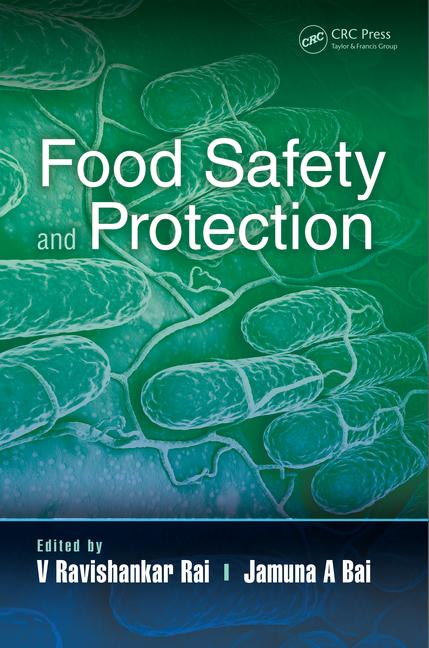Latest CDC Data Suggests Stalled Progress Toward Foodborne Illness Incidence Reduction Goals

Image credit: Nappy via Unsplash
The U.S. Centers for Disease Control and Prevention (CDC) recently released new foodborne illness incidence data that show a lack of progress toward disease reduction goals—but that may be attributed to an increased use of culture-independent diagnostic tests (CIDTs), which allows for the diagnosis of infections that previously would have gone undetected.
Reducing the incidence of foodborne and enteric diseases is a priority of CDC. The Healthy People 2030 (HP2030) initiative establishes disease reduction goals for Campylobacter, Listeria monocytogenes, Salmonella, and Shiga toxin-producing Escherichia coli (STEC) infections. To evaluate progress toward HP2030 goals, CDC’s Foodborne Diseases Active Surveillance Network (FoodNet) monitors infections caused by eight pathogens transmitted commonly through food.
The latest report summarizes preliminary 2023 FoodNet data for foodborne illnesses caused by important pathogens and describes changes in incidence compared with average annual incidence during 2016–2018.
During 2023, for domestically acquired infections only, incidence of campylobacteriosis was highest, followed by salmonellosis and STEC infection. Incidences of domestically acquired campylobacteriosis, cyclosporiasis, STEC infection, vibriosis, and yersiniosis increased compared with those during 2016–2018, whereas listeriosis, salmonellosis, and shigellosis incidences remained stable.
Overall, the percentage of infections attributable to specific Campylobacter, Shigella, Vibrio, and Yersinia species, as well as Salmonella serotypes and STEC serogroups, was lower in 2023 than in all previous years. During 2023, 78 percent of all bacterial infections were diagnosed by CIDTs, including 46 percent diagnosed using only CIDTs. The percentage of CIDT-diagnosed infections for which a reflex culture was attempted decreased from 71 percent during 2016–2018 to 68 percent during 2023. This decrease was largest for Yersinia, Vibrio, and STEC infections.
For all illnesses except listeriosis, the percentage of reflex cultures that successfully yielded an isolate was lower in 2023 than during previous years. This decrease in isolate availability has been associated with a decrease in serotyped, serogrouped, and speciated infections. For example, from 2016–2018 to 2023, the overall incidence of unspeciated infections increased substantially for Campylobacter, Shigella, Yersinia, and Vibrio; the percentage of speciated infections declined from 33 percent to 26 percent for Campylobacter, from 65 percent to 41 percent for Shigella, from 49 percent to 23 percent for Yersinia, and from 61 percent to 34 percent for Vibrio. Although only culture-independent methods are used to diagnose cyclosporiasis, increases in CIDT-diagnosed cyclosporiasis and cyclosporiasis incidence reflect CIDT-driven increases in bacterial infection incidence.
Of 8,454 total (both domestically acquired and travel-associated) Salmonella infections during 2023, 83 percent yielded an isolate, and 89 percent of isolates were fully serotyped. The incidence of nonserotyped infections increased substantially. The incidences of the most frequently reported serotypes, S. Enteritidis and S. Newport, remained stable during 2023 compared with those during 2016–2018. On the other hand, the incidences of the next-most frequently reported serotypes, S. Typhimurium, S. Javiana, and S. I 4,[5],12:i:-, decreased substantially.
Of 3,351 total STEC infections in the historic catchment area during 2023, 57 percent yielded an isolate, and 87 percent of isolates were fully serogrouped. The incidence of nonserogrouped infections increased substantially in 2023 compared with that during 2016–2018. During 2023, STEC O157 incidence decreased compared with incidence during 2016–2018, and non-O157 STEC incidence remained stable.
During 2022, FoodNet identified 61 cases of postdiarrheal hemolytic uremic syndrome (HUS) in persons aged less than 18 years, including 39 among children aged less than 5 years. The incidence of postdiarrheal HUS among persons under 18 years (0.6 per 100,000 persons) and those under 5 years (1.4 per 100,000) remained stable in 2022 compared with that during 2016–2018.
CDC reports that the present findings and previous FoodNet reports suggest a lack of progress toward foodborne disease reduction goals; however, this outcome might reflect changing diagnostic practices such as the increased use of CIDTs rather than an actual increase in disease incidence. Increased use of CIDTs facilitates prompt clinical diagnosis and treatment, but also complicates the interpretation of surveillance data and trends because CIDT adoption has varied over time, among clinical labs, and by pathogen. In addition, although CIDTs are generally considered more sensitive than are culture-based methods, some have high false-positive rates for certain pathogens (e.g., Vibrio). Previous studies have indicated that increased CIDT use has resulted in the diagnosis of infections that previously would have gone undetected; increased use of CIDTs has been associated with marked increases in reported incidence.
Increases in CIDT-diagnosed infections are also associated with decreased rates of reflex culture, thereby reducing the number of isolates available for subtyping, whole genome sequencing (WGS), and antimicrobial resistance (AMR) characterization. The impact of this reduction differs by species, serotype, and serogroup. Because an isolate is required for speciation, serotyping, and serogrouping, reduced isolate availability might result in under-detection of illnesses attributable to specific Campylobacter, Shigella, Vibrio, and Yersinia species, as well as Salmonella serotypes and STEC serogroups. The substantial increase in the incidence of infections for which the pathogen was not speciated, serotyped, or serogrouped is likely a result of changing diagnostic practices (i.e., increased CIDT use), resulting in a reduced availability of isolates for speciation and typing.
Continued reductions in isolate availability might hinder outbreak identification and response (e.g., WGS–based cluster identification and source attribution), detection of emerging AMR, and tracking of trends in illnesses attributable to specific species, subtypes, serotypes, and resistant strains. Increasing successful reflex culture rates after a CIDT diagnosis is a priority of CDC, and it requires focused efforts and resources at the federal, state, and local levels.
Looking for a reprint of this article?
From high-res PDFs to custom plaques, order your copy today!









